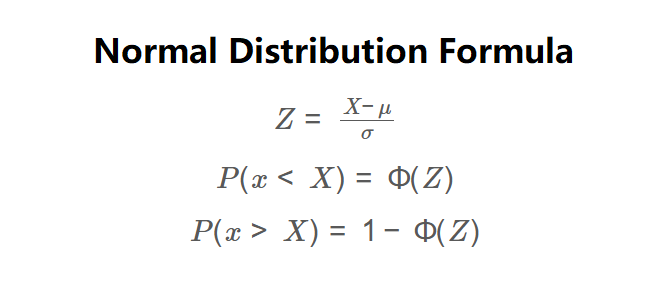 Home
Home
 Back
Back

Definition: The Normal Distribution Calculator computes the Z-score and probabilities \( P(x < X) \) and \( P(x > X) \) for a given raw score in a normal distribution with specified mean and standard deviation.
Purpose: This tool helps analyze the position of a data point within a normal distribution and estimate the likelihood of observing values above or below it, useful in statistics, quality control, and research.
The calculator uses the following formulas:
\( Z = \frac{X - \mu}{\sigma} \)
\( P(x < X) = \Phi(Z) \)
\( P(x > X) = 1 - \Phi(Z) \)
Where:
Steps:
Calculating normal distribution properties is essential for:
Example: Calculate the probabilities for a test score of 1380 in a normal distribution with mean 1150 and standard deviation 150:
Q: What is a normal distribution?
A: A normal distribution is a continuous probability distribution, symmetric and bell-shaped, where most data points cluster around the mean.
Q: What is a Z-score?
A: A Z-score measures how many standard deviations a raw score is from the mean, standardizing data for comparison.
Q: How are probabilities calculated?
A: Probabilities are computed using the standard normal CDF, with \( P(x < X) \) as the area under the curve to the left of the Z-score, and \( P(x > X) \) as the complement.